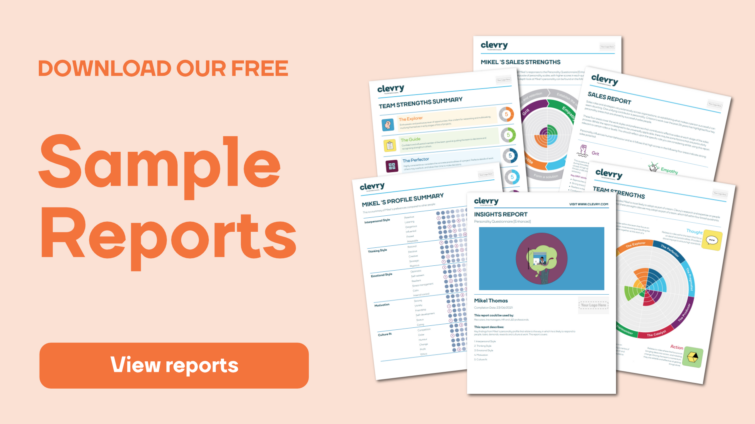Are your managers causing low employee engagement?
Research by Deloitte found over 1/4 of UK employees (27%) admitted that they were not performing their best at work.

As economic pressures on businesses grow globally, companies will increasingly need to find greater efficiencies across the board. This will inevitably mean refining recruitment processes to find the most effective staff, and finding new ways of engaging existing employees to enable them to better perform in their current roles.
So, what are the causes of low employee engagement? And is there a link between poor managers and employee engagement?
Employee engagement statistics
A Gallup State of the Global Workplace report has found some shocking stats when it comes to employee engagement.
In their study they found:
In Western Europe only 10% of employees are engaged at work; in comparison, for employees in the U.S., the figure is more than three times higher (33%), while the vast majority of Western Europeans (71%) are not engaged, and 19% are actively disengaged
- On a global level, two-thirds of employees worldwide (67%) are not engaged, this means they put in the time at work, but also minimal effort
- 18% of the global workforce are actively disengaged, this means they are openly resentful of their company while at work and that their workplace needs aren’t being met
- Organisations that base their performance management processes around basic human needs for psychological engagement e.g. positive workplace relationships, recognition, ongoing performance conversations and opportunities for personal development, get the most out of their employees
- In their paper Gallup reported that engagement levels vary worldwide depending on the job type. Employees in knowledge based professions (such as managers) are far more likely to be engaged in their role than those who are in more restrictive roles where the decisions are out of employees hands.
When an organisation has an actively engaged workforce they can expect a number of positive business outcomes:
- Organisations with highly engaged employees see 41% lower absenteeism and 17% higher productivity
- Staff turnover is lower as engaged staff members are more likely to stay with their employer, and for longer. These businesses achieve around 24% lower staff turnover when compared to those with a poor employee engagement rate
- Gallup found that employees who felt that their opinions counted for something at work were more likely to feel personally invested in their job and the company they work for
Businesses with highly engaged staff have on average 70% fewer safety incidents
- The behaviours of highly engaged employees resulted in 21% higher profitability as they were often more present in their roles and more observant of processes
- The companies that had the most success and then maintained that success were the ones that had a higher employee engagement rate
Why employee engagement matters
Engagement plays a key role in having a productive workforce so employers need to do everything they can to make their employees feel like valued members of the business. However building and then maintaining a motivated workforce isn’t as easy as it sounds.
How do you find an engaged employee?
We try to take a more well-rounded and personal approach when looking at employee engagement.
When looking to improve employee engagement, companies will often draw up a list of perfect traits that they think an engaged employee should have. We however, believe that this is the wrong approach to take.
The pursuit of perfect traits is often a bit of a red-herring – there is no such thing as perfect traits when it comes to employee engagement. This is because what motivates one employee for one role will not necessarily motivate someone else for another.
Indeed we have found that the best way to engage employees is to make sure they are a good fit for the right job role from the start. Our onboarding report can help HR managers to ensure that you get off on the right foot.
The role of poor managers in employee engagement
Gallup estimates that managers account for around a 70% variance in employee engagement across businesses. It seems that this variation is responsible (or at least responsible in part) for some of the poor employee engagement figures seen globally.
In order to drastically improve employee engagement, businesses need to be demanding that their teams have the best managers possible. This requires more than the hit-and-hope approach of promoting someone internally (who doesn’t have the necessary people skills) in the hope that they miraculously turn out to be good at managing people. Good management is a skill within itself and few people have all the necessary traits to thrive in such a role.
More often than not managers will be hired as a result of success in a previous non-management role, which means the overall productivity of the team can suffer if they’re not a natural fit for a management position.
One of the main problems businesses face here is that finding good managers has proven to be rather difficult. This is because traditionally the hiring of managers involved little research or scientific reasoning before making a hiring decision.
What makes a great manager?
In general great managers are people who can;
- Being assertive in driving business outcomes
- Balances employee happiness with individual and business related goals
- Ensures their teams have a culture of openness and accountability
- Easily building trust with new hires
- Makes decisions that are as free from bias as humanly possible
How do you find a great manager?
According to Gallup, only about 10% of the population have the relevant skill set that’s required of a good manager, and while people may exhibit a few of the key traits needed, many companies are actively harming their employee engagement (and thus harming their bottom line) by employing managers who are not a natural fit for the role.
In their report Gallup also found that a further 20% of people exhibit some of the necessary skills and characteristics required to function as managers. This 20% however, need some form of ongoing development and coaching in order for them to regularly get the best out of their teams.
Companies that get their management hiring right stand to gain in all areas of the business.
Our leadership report can help to ensure that you are one of these companies. The leadership report uses personality questionnaire results to indicate someone’s typical style and potential in a leadership role.
Sources
https://www.gallup.com/workplace/231593/why-great-managers-rare.aspx
https://www.gallup.com/workplace/231668/dismal-employee-engagement-sign-global-mismanagement.aspx
https://snacknation.com/wp-content/uploads/2015/11/Definitive-Guide-to-Employee-Engagement_LR.pdf



